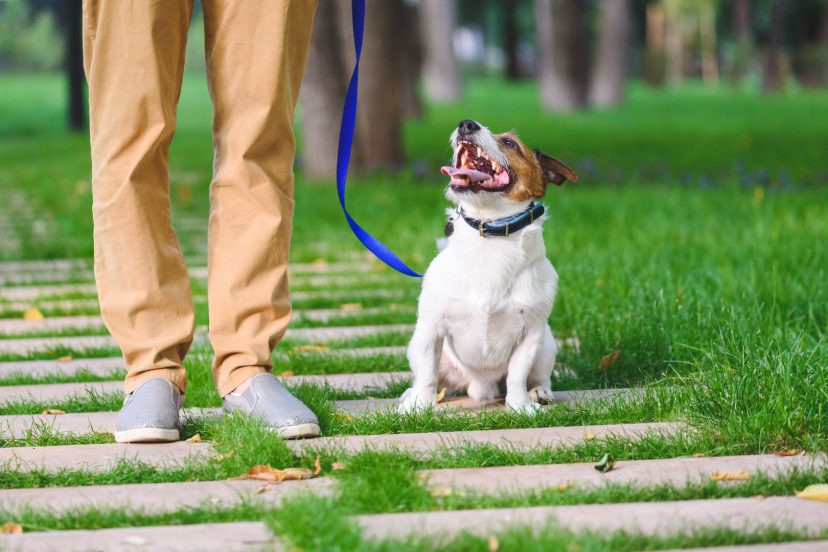What is a Long Lead Training Used For in Dogs?
Long lead training is a great tool for teaching dogs skills like recall, heel, and more in a larger space with more distractions than a typical backyard. Using a long line allows dog owners to maintain control and safety while giving their dogs more freedom to explore, learn, and practice obedience.
In this article, I’ll break down everything you need to know about what is long lead training used for in dogs, including what it is, the benefits, tips for success, and specific ways to use it to train skills like recall, heel, and more.
What is a Long Lead?
A long lead, also called a long line or training lead, is an extended leash that gives dogs more space to move around than a standard 6-foot leash allows. Long leads are usually made of lightweight nylon or cotton rope and range from 10 to 30 feet in length.
The extra length allows dogs to wander further away from their owner, explore their surroundings, and practice skills with more distractions while still allowing the owner to maintain control. This is perfect for working on training in areas like parks, fields, hiking trails, and other open spaces.
Long leads give owners a safety net – if the dog starts running off or ignoring commands, the owner can gently reel them back in before they get too far. This allows for more freedom but with more control than being completely off-leash.
Benefits of Long Lead Training
There are many great reasons to use a long lead when training dogs:
Practice Skills with More Distractions
Dogs often behave differently when they’re given more freedom. A long lead allows them to practice skills like come, heel, and stay with realistic distractions like other people, dogs, wildlife, scents, and more that can’t be replicated in a backyard. This prepares them for when they’ll need to obey commands in all kinds of real-world situations.
Explore New Environments Safely
New places can be overstimulating and scary for some dogs. A long lead lets them explore trails, parks, beaches, and other novel areas safely without running off or getting lost. As they get comfortable in the environment, it builds their confidence.
Get More Exercise
Running, playing, and wandering while on a long lead gives dogs much-needed physical and mental exercise. This helps prevent problem behaviors that result from boredom and pent-up energy.
Practice Recalls
For many owners, getting their dog to reliably come when called is a major challenge. Long leads are great for practicing this important skill by allowing the dog to move further away before calling them back. The extra distance adds realistic distractions to prove the recall.
Improve Leash Manners
When dogs learn to walk nicely on a loose leash, it makes walks much more pleasant for everyone. Long leads allow them to move further away and then reel them back in gently to reinforce good leash habits. This helps dogs learn not to pull.
Give Puppies More Freedom
Puppies need lots of socialization and exposure to new things during their critical development period. Safely exploring new environments on a long lead prevents bad habits from developing while allowing puppies to be puppies.
Build Stronger Bonds
Working together on a long lead builds trust and communication between dogs and owners. It provides mental stimulation that strengthens their bond. Dogs learn to look to their owner for guidance.
Tips for Successful Long Lead Training
Using a long lead takes some practice. Follow these tips to make sure it’s a positive, rewarding, and safe experience:
Use Proper Equipment
- Opt for a 15-30 foot cotton or nylon lead designed specifically for dog training. Retractable leashes do not provide enough control.
- Make sure the lead clips securely to a well-fitted collar or harness. A slipping lead poses safety risks.
- Bring tasty treats to reward good behavior. High-value rewards make training more effective.
Choose Appropriate Locations
- Start in enclosed areas like fields or tennis courts to avoid dangerous situations.
- Avoid areas near busy roads. Look for spaces with good visibility.
- Be mindful of leash laws requiring dogs to be under 6-foot control.
Practice Proper Safety Protocols
- Never wrap the lead around your hand or waist. This can cause rope burns or other injuries.
- Use a secure grip and keep the lead wrapped around your arm when the dog is further away.
- Consider a backup long-line attachment for extra security if your dog tends to slip out of their collar.
Set Your Dog Up for Success
- Make sure your dog is sufficiently exercised beforehand since tired dogs have shorter attention spans.
- Bring high-value rewards and use praise to reinforce wanted behaviors.
- Start training sessions with commands your dog already knows well to build confidence.
Avoid Common Mistakes
- Don’t allow the long lead to drag behind your dog since they could get tangled.
- Prevent tangling by reeling in excess lead in loops as your dog explores.
- Avoid jerking or yanking on the lead, which can frighten your dog or cause injury.
How to Use a Long Lead for Common Training Goals
Long leads are extremely versatile for all kinds of dog training. Here are some of the most common ways to use them:
Teach and Proof Recall
Recall (coming when called) is one of the most important skills for dogs to master.
To train: With your dog on the long lead, say their cue word (“Fido, come!”) then run backward or wave a treat to entice them to run toward you. Praise and reward when they come.
To prove: With the long lead attached, allow your dog to wander and get engaged with environmental distractions. Randomly call them back, rewarding for a speedy response.
Practice Loose Leash Walking
Loose leash walking prevents pulling and makes walks more pleasant.
To train: Hold a treat near your dog’s nose, take a few steps forward, then reward them for staying close to your side. Use the long lead to gently guide them back into position if they start to pull. The reward for slack leash.
To prove: Practice changing pace and direction often while your dog is on the long lead. If they start to pull, stop moving and call them back to your side. The reward for correcting themselves.
Train a Reliable Heel
Heel means your dog stays focused on you and positioned close to your side while walking.
To train: With your dog on the long lead, hold a treat at your waist and take a few steps. Guide them into heel position with the lead if needed and reward them. Gradually increase the duration of healing.
To prove: Practice heeling on the long lead during different activities – walking normally, changing pace, turning corners, stopping and sitting, etc. Use gentle leash pressure when needed to keep them in position, then reward.
Build Distance for Stays
A solid stay while you move away is important for manners and control.
To train: Have your dog sit or down, say “stay”, take a few steps away, then return and reward. Gradually increase distance, using the long line to prevent breaking the stay if needed.
To prove: When your dog has a good stay, practice it on the long lead in more distracting environments, gradually working up to longer durations and distances. The reward for remaining in place.
Improve Manners Around Other Dogs
Some dogs struggle to remain focused on their owner around other dogs.
To train: At a distance from other dogs, use the long lead to keep your dog close and focused on you. Reward for disengaging from the distraction and paying attention to you.
To prove: Practice getting your dog’s attention and having them sit or heel past other dogs on a loose lead. Use rewards to reinforce keeping focus on you.
Explore New Environments
Letting your dog safely explore new places builds their confidence.
To train: Keep your dog on a long lead in a new environment at first, letting them wander and get comfortable while preventing running off. Reward calm, polite exploration.
To prove: As your dog becomes more confident, practice commands they know reliably and reinforce them listening in the stimulating environment.
With proper precautions, long lead training opens up a whole new world of training possibilities. With the techniques above, you’ll be able to use long leads to improve your dog’s focus, obedience skills and leash manners. Just make sure to do so in a safe manner by using appropriate equipment and locations. The investment of time will pay off with a better behaved companion!




